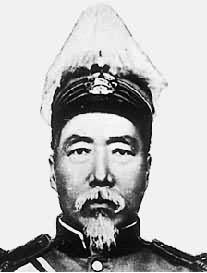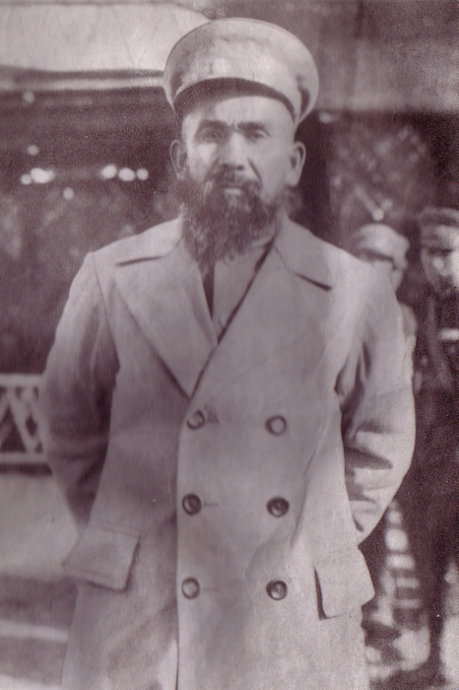|
Battle Of Toksun
The Battle of Toksun () occurred in July 1933 when Khoja Niyas Hajji, a Uyghur people, Uighur leader, defected with his forces to the newly enthroned government of Sheng Shicai. Khoja Niyas Hajji marched with his troops across Dawan Ch'eng and occupied Toksun, where the 36th Division (National Revolutionary Army), New 36th Division forces of General Ma Shih-ming achieved victory over Niyas Hajji's forces. References Conflicts in 1933 History of Xinjiang 1933 in China East Turkestan independence movement Xinjiang Wars {{China-hist-stub ... [...More Info...] [...Related Items...] OR: [Wikipedia] [Google] [Baidu] |
Kumul Rebellion
The Kumul Rebellion (, "Hami Uprising") was a rebellion of Hami, Kumulik Uyghurs from 1931 to 1934 who conspired with Hui people, Hui Islam in China, Chinese Muslim Gen. Ma Zhongying to overthrow Jin Shuren, governor of Xinjiang. The Kumul Uyghurs were loyalists of the Kumul Khanate and wanted to restore the heir to the Khanate and overthrow Jin. The Kuomintang wanted Jin removed because of his ties to the Soviet Union, so it approved of the operation while pretending to acknowledge Jin as governor. The rebellion then catapulted into large-scale fighting as Hotan, Khotanlik Uyghurs, Uyghur rebels in southern Xinjiang started a separate rebellion for independence in collusion with Kirghiz rebels. Various groups rebelled, and were not united (some even fought each other). The main part of the war was waged by Ma Zhongying against the Xinjiang government. He was supported by Chiang Kai-shek, the Premier of China, who secretly agreed to let Ma seize Xinjiang. Background Gov. Jin Shu ... [...More Info...] [...Related Items...] OR: [Wikipedia] [Google] [Baidu] |
Toksun
Toksun County is a county in Turpan Prefecture, Xinjiang Uyghur Autonomous Region, China. Name The term 'Toksun' means 'ninety'. History The Battle of Toksun took place in this county in July 1933 when Khoja Niyas Hajji, a Uighur leader, defected with his forces to Governor Sheng Shicai. He advanced to Toksun via Dawan Ch'eng, where the Chinese Muslim forces of General Ma Shih-ming achieved victory over Niyas Hajji's forces. In December 2010, Zeng Lingquan (), who ran an adoption agency for the physically and mentally disabled with no operation license in Sichuan, was arrested. Zeng reportedly sent the mentally ill to work in a factory run by Li Xinglin () where they were enslaved and worked year round (instead of seasonally as with other local factories) in unsafe conditions at the Jia‘ersi Green Construction Material Chemical Factory () in Kümüx. In 2017, ''Radio Free Asia'' reported that a police officer in Toksun County had said that all Uyghurs who wished to travel ... [...More Info...] [...Related Items...] OR: [Wikipedia] [Google] [Baidu] |
Xinjiang Province, Republic Of China
Xinjiang Province () or Sinkiang Province was a province of the Republic of China. First set up as a province in 1884 by the Qing dynasty, it was replaced in 1955 by the Xinjiang Uygur Autonomous Region of the People's Republic of China. The original provincial government was relocated to Taipei as the Sinkiang Provincial Government Office (新疆省政府辦事處) until its dissolution in 1992. Administration The province inherited the borders of the Qing dynasty province, bordering Kansu, Tsinghai, the Mongol Area, Tibet Area and the countries Soviet Union, Afghanistan, India and Pakistan. The claimed boundaries of the province included all of today's Xinjiang and parts of Mongolia, Tajikistan, Afghanistan and Pakistan. History In 1912, the Qing dynasty was replaced by the Republic of China. Yuan Dahua, the last Qing governor of Xinjiang, fled. One of his subordinates, Yang Zengxin, took control of the province and acceded in name to the Republic of China in March ... [...More Info...] [...Related Items...] OR: [Wikipedia] [Google] [Baidu] |
Republic Of China (1912–1949)
The Republic of China (ROC), between 1912 and 1949, was a sovereign state recognised as the official designation of China when it was based on Mainland China, prior to the Retreat of the government of the Republic of China to Taiwan, relocation of Government of the Republic of China, its central government to Taiwan as a result of the Chinese Civil War. At a Population history of China, population of 541 million in 1949, it was the List of countries and dependencies by population, world's most populous country. Covering , it consisted of 35 provinces of China, provinces, 1 Special administrative regions of China#ROC special administrative regions, special administrative region, 2 regions, 12 special municipality (Republic of China), special municipalities, 14 leagues, and 4 special banners. The China, People's Republic of China (PRC), which rules mainland China today, considers ROC as a country that ceased to exist since 1949; thus, the history of ROC before 1949 is often ... [...More Info...] [...Related Items...] OR: [Wikipedia] [Google] [Baidu] |
36th Division (National Revolutionary Army)
The New 36th Division was a cavalry division in the National Revolutionary Army. It was created in 1932 by the Kuomintang for General Ma Zhongying, who was also its first commander. It was made almost entirely out of Hui Muslim troops, all of its officers were Hui, with a few thousand Uighurs forced conscripts in the rank and file. It was commonly referred to as the "KMT 36th Division", or "Tungan 36th Division". Original organization General Ma Zhongying, a Muslim who had trained under Chiang Kai-shek at Whampoa Military Academy in Nanjing in 1929, was the new 36th Division commander. Kamal Kaya Efendi, a Turk and a former Ottoman military officer was chief-of-staff to Ma Zhongying. The 1st Brigade was commanded by General Ma Ju-lung. The 2nd Brigade was commanded by General Ma Sheng-kuei. Cavalry regiments were divided into 2,000 men each, by horse color, black, brown, or white. Infantry then followed cavalry. Su Chin-shou was General Ma Zhancang's chief of staff. ... [...More Info...] [...Related Items...] OR: [Wikipedia] [Google] [Baidu] |
Kokbayraq Flag
The Kökbayraq ("sky flag"), anglicised as the Kokbayraq, is a flag unofficially used to represent the Xinjiang region of China and the historic region of East Turkestan in East Asia. The flag was originally used as the national flag of the short-lived breakaway state known as the First East Turkestan Republic (1933–1934). The Kökbayraq has a white crescent (young waning moon) with a five pointed star on blue background, it was adopted on 12 November 1933 as the national flag of the First East Turkestan Republic during Declaration of independence. With the exception of the blue background, the flag is identical to the Flag of Turkey. Uyghurs in Kyrgyzstan and Pakistan fly the flag as their ethnic flag. Usage In modern times it is popularly used as a symbol of the East Turkestan independence movement and is claimed by the East Turkistan Government in Exile to be the national flag of an independent East Turkestan. [...More Info...] [...Related Items...] OR: [Wikipedia] [Google] [Baidu] |
Uyghur People
The Uyghurs; ; ; ; zh, s=, t=, p=Wéiwú'ěr, IPA: ( ), alternatively spelled Uighurs, Uygurs or Uigurs, are a Turkic ethnic group originating from and culturally affiliated with the general region of Central Asia, Central and East Asia. The Uyghurs are recognized as native to the Xinjiang Uyghur Autonomous Region in Northwest China. They are one of Ethnic minorities in China, China's 55 officially recognized ethnic minorities. The Uyghurs are recognized by the Government of China, Chinese government as a Regional language, regional minority and the Titular nation, titular people of Xinjiang. The Uyghurs have traditionally inhabited a series of Oasis, oases scattered across the Taklamakan Desert within the Tarim Basin. These oases have historically existed as independent states or were controlled by many civilizations including History of China, China, the Mongol Empire, Mongols, the Tibetan Empire, Tibetans and various List of Turkic dynasties and countries, Turkic po ... [...More Info...] [...Related Items...] OR: [Wikipedia] [Google] [Baidu] |
Khoja Niyas Hajji
Khoja Niyaz, also Khoja Niyaz Haji ( ug, خوجا نىياز ھاجى, Xoja Niyaz Haji; ; 1889 – 21 August 1941), was a Uyghur independence movement leader who led several rebellions in Xinjiang against the Kumul Khanate, the Chinese governor Jin Shuren and later the Hui warlord Ma Chung-ying. He is best remembered as the first and only president of the short-lived Islamic Republic of Eastern Turkestan from November 1933 until the republic's defeat in 1934. Early life and uprisings Khoja was born in 1889 in a small mountainous village in Kumul Prefecture, Xinjiang. He participated in his first rebellion at the age 18, joining a 1907 uprising of peasants and mountaineers against Shah Maqsud, hereditary ruler of Kumul (who was allowed semi-autonomous rule by Qing China). After being defeated, he fled to the Turpan region, where he entered "Astana," religious school and became acquainted with future prominent Uyghur Turpan revolutionary leaders, brothers Maksut and Mahmut ... [...More Info...] [...Related Items...] OR: [Wikipedia] [Google] [Baidu] |
Hui People
The Hui people ( zh, c=, p=Huízú, w=Hui2-tsu2, Xiao'erjing: , dng, Хуэйзў, ) are an East Asian ethnoreligious group predominantly composed of Chinese-speaking adherents of Islam. They are distributed throughout China, mainly in the northwestern provinces and in the Zhongyuan region. According to the 2011 census, China is home to approximately 10.5 million Hui people. The 110,000 Dungan people of Kazakhstan and Kyrgyzstan are also considered part of the Hui ethnicity. The Hui have a distinct connection with Islamic culture. For example, they follow Islamic dietary laws and reject the consumption of pork, the most commonly consumed meat in China, and have developed their own variation of Chinese cuisine. They also dress differently than the Han Chinese, some men wear white caps (taqiyah) and some women wear headscarves, as is the case in many Islamic cultures. The Hui people are one of 56 ethnic groups recognized by China. The government defines the Hui pe ... [...More Info...] [...Related Items...] OR: [Wikipedia] [Google] [Baidu] |
Sheng Shicai
Sheng Shicai (; 3 December 189513 July 1970) was a Chinese warlord who ruled Xinjiang from 1933 to 1944. Sheng's rise to power started with a coup d'état in 1933 when he was appointed the ''duban'' or Military Governor of Xinjiang. His rule over Xinjiang is marked by close cooperation with the Soviet Union, allowing the Soviets trade monopoly and exploitation of resources, which effectively made Xinjiang a Soviet puppet state. The Soviet era ended in 1942, when Sheng approached the Nationalist Chinese government, but still retained much power over the province. He was dismissed from post in 1944 and named Minister of Agriculture and Forestry. Growing animosity against him led the government to dismiss him again and appoint to a military post. At the end of the Chinese Civil War, Sheng fled mainland China to Taiwan with the rest of Kuomintang. Sheng Shicai was a Manchurian-born Han Chinese, educated in Tokyo, Japan, where he studied political economy and later attended the Imp ... [...More Info...] [...Related Items...] OR: [Wikipedia] [Google] [Baidu] |







